
Title: Crime Scene Investigation & Management
Plenary Talk
Prof. Anthony Schembri
Former Police Commissioner in New York, Sheffield Hallam University, United States
Abstract
This will be a presentation of real crime scenes and the management of efforts bringing together the forensic experts and the investigative personal to solve real cases. Having lead the Homicide Department department unlike CSI and other programs, police fail to collect and properly analysis a crime scene which I will demonstrate. We need to interpret crime scenes. Sloppy police investigations, lazy forensic personnel team up to reduce the ability to solve cases with solid evidence.
Biography
Anthony Schembri is a respected law enforcement and academic professional with over four decades’ experience in the field. Over the years, he has drawn praise from such varied sources as New York City Mayor, President Jimmy Carter, Florida Governor Jeb Bush, and New York Governor Mario Cuomo. First appointed to the Brooklyn District Attorneys Office he advanced to Deputy Chief of the Narcotics Bureau, then to Director of Training at the District Attorneys Police Academy. Anthony Schembri has served as the city’s Deputy Inspector General, investigating cases of major crime and corruption. He was appointed by the Mayor of New York as Corrections Commissioner, a position putting him in charge of 12,000 uniformed officers and 20,000 inmates at 19 separate jail facilities. Today, the Citrus County, Florida, resident serves as a Visiting Professor at Oxford and Sheffield Hallam University and named Outstanding Professor of the Year at the University of Florida.

Title: The effectiveness of DNA databases
Plenary Talk
Prof. Anna Barbaro
Association of Women Forensic Experts, Italy
Abstract
During years all around the world have been developed DNA databases in which genetic profiles of certain people are recorded as well as the ones of traces found at the scene of a crime. This allows routine comparisons between a large number of DNA profiles at national and international levels. The main purpose of a DNA database is to allow criminal investigators to search for matches between convicted persons and evidence from unsolved cases and to link different crime scenes. In this presentation there will be discussed the advantages and limitations of DNA databases with an overview to different databases available worldwide and to their effectiveness in solving crimes, especially cold cases.
Biography
Anna Barbaro has completed her European PhD in Forensic Genetics (PhD) at University of Santiago de Compostela (Spain). She got a Diploma at the School of Specialization in Applied Genetics and a Master Diploma in Psychological and Behavioral Techniques of the Criminal Investigation at the University of Rome La Sapienza (Italy). She has published more than 150 papers, including conference presentation, she is Author of 3 technical Manuals and of some chapters in other books. She serves as President of the Worldwide Association of Women Forensic Experts, she is honor member of some scientific associations, she serves as reviewer for several international scientific journals and she is Member of the Editorial Committee of some international scientific journals. Invited speaker at various national and international conferences, organizer of courses and conferences about Forensic Sciences, member of the Scientific Committee of several courses and conferences. She is currently researcher at the University of Alcalà (Spain)

Title: The Fundamental Strength of any Organisation it is People
Dr. Vickie Burgin
NPCC Forensic Capability Network, United Kingdom
Abstract
The fundamental strength of any organization is its people and the Forensic Capability Network (FCN) recognizes that, across the forensic landscape, we need to be able to attract, develop, nurture, and retain the very best of our profession. Core to successfully delivering a sustainable, competent, and agile workforce therefore requires a commitment to focus not only their training, skills and continuous professional develop, but crucially their long-term health and wellbeing.
The core FCN, working across the policing network and wider forensic community, is building a Workforce Strategy and a plan, which, driven by business intelligence about demand for both existing and future forensic science capabilities, will shape our forensic science workforce so we can be successful in having the right number of people with the right skills in the right place at the right time.
Biography
I am a Senior Leader within Policing, having over 27 years’ experience in the application of Forensic Science within operational policing, across all levels of criminality. As Director of Science for FCN, providing support and coordination to 43 police forces across England and Wales. Having responsibility for national portfolios, with a passion for driving change to deliver best practice with quality embedded at the heart of forensic science and operational investigations

Title: Pettler’s Staging Taxonomy and The Murder Room: A Scientific, Multidisciplinary, Victim-Centered Death Investigation Methodology
Keynote Talk
Dr. Laura G. Pettler
Forensic Criminologist / Private Death Investigator, United Kingdom
Abstract
Pettler’s Staging Taxonomy and The Murder Room, both invented by forensic criminologist Dr. Laura Pettler are chaging the perception of staging and preferred methodology in death investigation today. Pettler’s Staging Taxonomy is the first of its kind to classify staging behaviors into one of three clusters to be used in part with The Murder Room death investigation method. The Murder Room is a systematic, multidisciplinary, empirical victim-centered death investigation methodology that not only helps investigators arrive at the correct suspect, but also with the correct manner of death. With an 98% solvability rate, The Murder Room method is surprisingly easy to learn, easy to build, and easy to use. Worldwide, The Murder Room method has been adopted by investigators with resounding success.
Biography
Laura Pettler completed her PhD from the Department of Public Safety, Capella University, Minnesota, USA. She is CEO of LPA and author of the first book on staged murder cases in the world. Dr. Pettler has published numerous articles on death investigation, cold case homicide investigation, crime scene reconstruction, intimate partner homicide, and death scene staging. She was the forensic criminologist for The Dr. Oz Show and appears on numerous television shows with her area of expertise. She has built, taught, and made hundreds of presentations on related topics and has worked death cases in the field since 2003

Title: Algorithms, A.I., gender stereotypes and violence against women
Keynote Talk
Dr. Giuseppina Seppini, and Dr. Iolanda Ippolito
Forum Lex Association, Italy
Abstract
Algorithms and A.I. may have the power to influence, gender stereotypes and consequently violence against women.
An orientation to gender equality is increasingly necessary, in order to integrate it into the principles of A.I., with an approach based on rights and intervening on the “system”.
Experts have shown that, with respect to the spread of gender stereotypes, which can contribute to fueling the phenomenon of violence against women, computer vision algorithms could automatically learn social bias similar to those of human beings, if pre-trained with a large set of images online, without prior provision of categorized images.
This type of pre-trained unsupervised algorithms could therefore, learning social bias, similar to those of human beings, make decisions based on prejudices or stereotypes.
The same A.I. can come to our rescue anyway, allowing us to become aware of the existing biases with respect to a data set and to be able to deal with it.
It is important to emphasize that it is not the algorithm that is discriminating, but the data from which it draws information or from the political logic of the person who designs it.
In order to help stem the phenomenon of violence against women, there are many issues that come into play: tools for neutralizing algorithmic biases (ethical guidelines, also algorithms can remove the spread of sexist languages), together with policy makers and beyond, because it is the data that must be able to be changed and this can only happen if people's behavior is changed
Biography
Dr. Giuseppina Seppini, MSN, RN, Criminologist, Forensic Analyst, Facial Expression Analyst , Director of Piemonte Regional Office of Forum Lex Association. Adjunct professor of Nursing Research, Master of Science in Nursing, Faculty of Medicine and Surgery, Catholic University, Cottolengo Hospital, Turin Italy; Adjunct professor of Theory and Methods of professional Management, and applications in Nursing, Master of Science in Nursing, School of Medicine of the University of Turin; Vice-President, Scientific Manager National Association of Neurscience Nurses; Member Italian Academy of Forensic Science (Forensic and legal Nursing); Member of International Association of Forensic Nurses; Member of WAWFE, Worldwide Association of Women Forensic Experts.
Dr. Iolanda Ippolito, Criminologist - Police Officer
Present President Association "Forum Lex – ", (Italy) ▪ Headmaster and professor in Investigative Criminology for the Workshop in Juvenile Criminology ▪ headmaster and professor in Course of specialisation "Expertise in Investigative Techniques and Intervention Procedures in cases of Domestic Violence, Stalking, Feminicide, Bullying and Baby Gang. Present Judicial Police Unit for Gender and Juvenile Violence Municipal Police Department in Naples, Responsible person of the Unit for activities of prevention, control and contrast and assistance to women exposed to the risk of violence, stalking and violence against children. Referent of the Ministry of Infrastructure and Transport in the project “VI International Festival of Road Safety and Legality Arts" as expertise in the topics of Gender violence,bullying, cyberbullying and web dangers. University teaching professional Università Suor Orsola Benincasa, Naples (Italy) Second level Master in Family Law about "Investigative Criminology in relation to Gender Violence and Domestic Crimes".
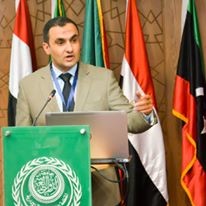
Title: International cooperation in combating cybercrimes against children& the role of digital evidences to enhance it
Keynote Talk
DR. Hossam Elshenraki
Associate Professor at Dubai Police HQ
United Arab Emirates
Abstract
Sexual exploitation of children on the Internet is an international problem that has emerged with the proliferation of the use of the Internet and the use of crimes by some, perhaps the most serious, is the use of it in sexual exploitation. It has become difficult to track the perpetrators of this crime in all its forms, which has made it easier for perpetrators to discover their crimes and to escape legal and security prosecution because of the ability of the network to conceal and overcome geographical borders and the means through which crime can be committed This has led to measures to combat these crimes against many of the obstacles and the most important of which are those that face international cooperation in fighting, which has often led the security and judicial agencies to pursue the perpetrators and to control the evidence of their crimes at the international level. Thus, the urgent need for effective international cooperation in all control axes, namely, the legal and security axis, and both complement each other, where the legal axis is is the protectionism and legitimacy The role of security in order to legitimize security procedures taking place within the framework and the problem erupts here when the legal systems differ, in light of the multiple countries where the elements of crime are found and whose pillars achieved. This requires to find means of international cooperation in this regard, which can overcome obstacles, pursue and control the perpetrators, especially in light of the major technological development that has emerged with the emergence of highly complex and hidden criminal methods and that are capable of discovering the identity of the perpetrators, and thus limiting the ability of the ability of the ability of even in the existence of the ability of the existence of the existence of the ability of the existence of the ability of the existence of the existence of the existence of the ability of the existence of the existence of the existence of the existence of the existence of the existence of the existence of the existence of mechanisms Effective international cooperation ‐ which requires the modernization and development of those mechanisms in a coherent and expeditious manner to keep pace with those developments. International cooperation in combating the crimes of sexual exploitation of children via the Internet is the most important aspect of combating the international character of crime. Perpetrators of sexual exploitation crimes target children for material gain. This done through several forms of crime, including the extraction of a child to produce harmful pornography or forced to prostitution with adults who seek sex with children. Through security control operations, it is shown that effective international cooperation among the various security agencies for the success of control efforts The United Nations Organization, several other regional organizations, coordinated by the International Criminal Police Organization (Interpol) and several regional police organizations working in the fight against crime, especially those with transboundary character, as well as civil society organizations supported by the government or those distinguished by an organized international character. The cause of the seriousness of the crime is due to the victim because it is a vulnerable and initial protection group. Children are the pillar of the future, which requires the international community's solidarity to protect them from violations that lead to the destruction of their will and their physical and psychological ills that threaten the future of humanity. In light of the insufficient international cooperation, the need for developing such cooperation mechanisms shows, especially given the growing technological capabilities of the perpetrators that enable them to hide their identities through the internet, such as the deep networks and the internet The security services cannot identify and arrest the perpetrators or their locations, allow them to escape their crimes and encourage others to do the same. Interpol, in conjunction with several civil organizations working in the field of combating sexual exploitation of children online, conducted an important study on the status of a descriptive profile for children in the International Photo Database for Children, whose pictures appear on different occasions and fed by law enforcement personnel in all countries of the world. Whereas Interpol, in its efforts to prevent sexual exploitation of children, has worked to study a descriptive file for anonymous children and placed with sexual content that includes
Biography
DR. Hossam Elshenraki Experienced Investigator with a demonstrated history of working in law enforcement specially in criminal investigation and cyber crimes investigation Skilled in Teaching & Training in fields of Cyber crimes investigation, Law Enforcement Criminal investigation. cyber crime scene management Working now as academic professor in Dubai police academy as associate professor in criminal investigation and cyber crimes investigation, Have experiences in teaching methods professional and academic matters.
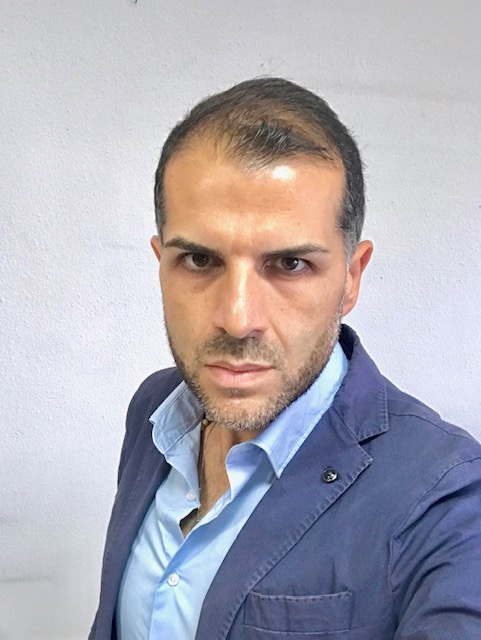
Title: Is the offender predictable? The Geographic Profiling in investigation
Keynote Talk
Dr. Domingo Magliocca
Geographic Profiling Analyst, Italy
Abstract
This presentation introduce how it is possible contrast a serial offender using a specific method called Geographic Profiling. This method uses the geographic evidences of crimes to identify the most likely area of offender’s residence or his/her anchor points.
It is fundamental stress that Geographic Profiling cannot be just running a geographic profiling software or entering crime data inside a spatial analysis tool.
This innovative investigative technique requires the knowledge of theoretical principles, experience in criminal investigation, the examination of all informations about crimes, the choice of locations to include in geographic analysis and the interpretation of geoprofile’s results.
Biography
Dr. Domingo Magliocca is a Certified Geographic Profiling Analyst serving in Italy as a police officer assigned at Judicial Police Section of local Public Prosecutor's Office for criminal investigation activities. He has a Bachelor of Arts Degree in Security and Social Control Operator, a Master’s Degree in Applied Criminology for Investigation and Security from University of Bologna, and a Master’s Degree in Law from the University Telematica Pegaso. Domingo is author of books “Tracce geografiche criminali. Teoria e tecnica del Profilo Geografico” (Primiceri Edition, 2020) about geographic profiling technique, “Introduzione al crimine violento. Criminal profiling e classificazioni pratiche (Primiceri Edition, 2020), “Profilo Criminale. Analisi integrata del luogo del delitto” (Primiceri Edition, 2019) about criminal profiling, and “Il delitto di atti persecutori - stalking” (Primiceri Edition, 2017) about phenomena of stalking. He is author of specialistic articles about stalking, crime scene, law, geographical offender profiling as “Geographic Profiling Report. The homicide of Cattolica and of others women: hypothesis of serial killer in Milan”. He was a board member of journal "Intelligence & Storia Top Secret", Peer Reviewer of international scientific journal “Universal Journal of Psychology”. Domingo is a collaborator of technical-juridical journal "Sicurezza e Giustizia", as well as speaker in international forensic science conferences. He is a honorary member of Bolivian Forensic Sciences Society.

Title: Pollen molecular biology: Applications in the forensic palynology and future prospects in KSA
Manal Alosaimi
Laboratory specialist, Saudi Arabia
Abstract
Palynology, which is the study of pollen and spores in an archaeological or geological context, has become a well-established research tool leading to many significant scientific developments. The term paly- nomorph includes pollen of spermatophytes, spores of fungi, ferns, and bryophytes, as well as other organic-walled microfossils, such as dinoflagellates and acritarches. Advances in plant genomics have had a high impact on the field of forensic botany. Forensic palynology has also been used and applied more recently to criminal investigation in a meaningful way. However, the use of pollen DNA profiling in forensic investigations has yet to be applied. There were earlier uses of dust traces in some forensic analyses that considered pollen as a type of botanical dust debris. Pollen grains can be studied for com- parative morphological data, clues to unexpected aspects relating to breeding systems, pollination biol- ogy and hybridization. This can provide a better understanding of the entire biology of the group under investigation. Forensic palynology refers to the use of pollen and other spores when it is used as evidence in legal cases to resolve criminal issues by proving or disproving relationships between people and crime scenes. This overview describes the various contributions and the significance of palynology, its applica- tions, different recent approaches and how it could be further employed in solving criminal investigations.
Biography
Master of Forensic Evidence and Laboratory Specialist, Member in the Arab Society of Forensic Sciences, Certified Trainer, First Aid provider, The public relations leader of the (LabTest) volunteer Team
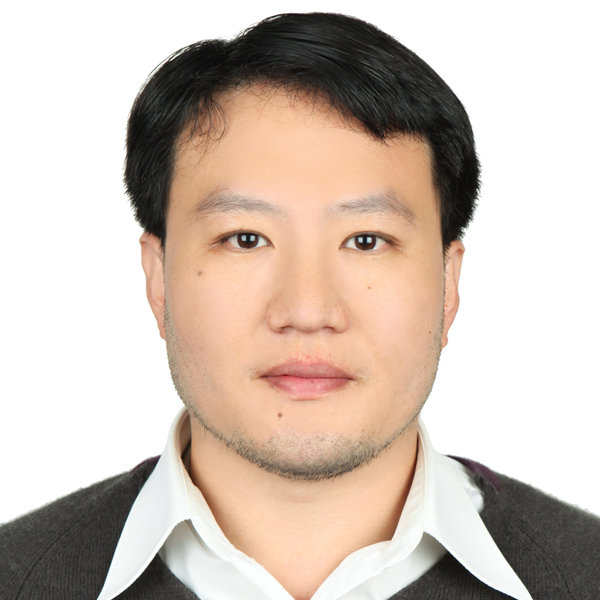
Title: Using social network analysis to profile street group fighting
Shih, Chih-Hung & Chen, Tzu-Chia
1 Associate Professor, Department of Criminal Investigation, Central Police University, Taiwan
2Detective, Criminal Investigation Division, Kaohsiung City Police Department, Taiwan
Abstract
Although street group fighting is only a violent incident, it has a significant impact on citizens' perceptions of social safety and Police efficiency. In Taiwan, the amendment to the Criminal Law, passed on January 15, 2020, aggravate punishment of "Offenses of Interference with Public Order," in which participants of a group of three or more people, gathering at a public place or place where the public may enter and exit and employing violence or threats, to response the problem.
This study focuses on using social network analysis to profile 10 group fighting cases in 2019 in one municipality of Taiwan from several official databases, to investigate network denseness (degree of cohesion among members) and nodes who ganged up the participants in each case.
The results show that the social network pattern of street group fighting could classify into two kinds of types: traditional hierarchical-gang-organization-type and loosed aggregation types. Finally, we propose investigating strategies for law enforcement agencies to formulate measures for the group fighting prevention and investigation.
Keywords: Social Network Analysis, street group fighting, Proactive Investigations
Biography
Shih, Chih-Hung working as Associate Professor, Department of Criminal Investigation, Central Police University, Taiwan & Chen, Tzu-Chia working as Detective, Criminal Investigation Division, Kaohsiung City Police Department, Taiwan.

Title: Luminescent Nanostructures and Nano-assemblies for Forensic Investigations
Sagar Bhowmik
National forensic sciences university, India
Abstract
Basic Luminescent nanomaterials are an important class of material with potential application in sensing, imaging, photocatalysis, electronics, display application etc. Here we have demonstrated the application of different fluorescent nanomaterials for forensic investigative research with major focus on development of latent fingerprint and explosive sensing. Thus, in our first work, different amphiphilic silica nanoparticles were synthesized and meticulously characterized for their application in development of latent fingerprints. We could find that long alkyl chain (−C11H23 and −C17H35) based amphiphilic silica nanoparticles showed good performance for development of latent fingerprints. To produce a luminescent silica nanopowder with similar surface character, a Pt(II)C^N^N−C12H25 luminophore with long hydrophobic aliphatic chain (−C12H25) was introduced to the silica surface. This electron rich luminescent hybrid nanopowder can detect trinitrotoluene (TNT) through photoinduced electron transfer (PET) process. We successfully demonstrated that this Pt(II)-complex functionalized luminescent silica nanopowder could be useful for dual purpose; for the development of latent fingerprint along with simultaneous identification of explosive traces if present in the print. (Scheme 1) In second work, an organometallic ruthenium nanocluster with ∼8.6 kDa mol. Wt. was synthesized, where aromatic phenanthrene ligands were intermolecularly conjugated through Ru core. The Ru nanocluster showed excellent sensing performance for detection of nitroaromatic explosive molecules through luminescence quenching strategy. (Scheme 2)
Biography
Sagar Bhowmik is presently serving as the Nodal Officer (East & North-Eastern region) of National Forensic Sciences University, MHA, Government of India. He has completed his MS in forensic nanotechnology and postgraduate diploma in fingerprint sciences. Currently he is pursuing his PhD in forensic science from NFSU. He specialized in the area of development of nano-sensor for forensic investigations, advance fingerprint development techniques and preventive forensics. He involved in forensic trainings for several international police officers from various countries and serving different state governments for FSLs modernization. He got grants like Innovation Grant, SHODH fellowship by Govt. of Gujarat, CSIR Grant by GoI. He was awarded best scientific speaker by Tripura Chemical Society. He has published several research papers in reputed International journals and presented his work as a speaker in several International conferences in India and abroad. His research work is awarded by several organizations like DRDO, IIT- Gandhinagar, and Asian Network for Natural and Unnatural Materials.

Title: Integration to the investigative techniques, forensic and social sciences
Dr. Roberta Posa
NeuroIntelligence, Italy
Abstract
The psychological autopsy can be considered an 'integration to the investigative techniques, forensic and social sciences. The technique is applicable whenever we try to analyze an equivocal death or the disappearance of a person. The technique consists of gathering as much information as possible about the victim's life through structured interviews with people who had a relationship with the missing person. We have also considered the use of interviews with medical personnel and even police involved in first aid.
The purpose is always to perform a retrospective reconstruction of the missing or deceased person's life in order to identify the reasons that caused their disappearance or death. In the case of death of the person, define whether it is suicide, homicide or accidental death. We have applied an innovative restructuring of the MAPI paying attention to the protection of the truthfulness of the information obtained. We have used innovative interviews with the aim of avoiding the alteration of the answers obtained.
Our new protocols have made it possible to identify the real decision-making factors of the victim that led to the occurrence of the event as well as to his death or disappearance.
The psychological autopsy from an investigative point of view originates from the analysis of the crime scene. In the case of a cold case, it may not be possible to find biological or other traces found at the scene of the criminal event, but traces of a different nature, such as psychological traces, may be found. Psychological traces remain present in the places where the victim lived and also in the people who were in contact with the victim.
The purpose of this research is to propose an innovative technique of Psychological Autopsy. In comparison with the classic MAPI our technique is structured on each single case adapting the interview according to the environmental circumstances and to the social-cultural characteristics of the examined subject and, not as last, the kind of gun used in the criminal event. According to us this way of Psychological Autopsy, improving the interviewee confidence and compliance, allows to get information that could escape to a standardized investigation. In one of the cold case that we have studied, this technique of Psychological Autopsy has allowed to get some biological material, coming from the crime scene, that had been secretly hidden from the subject for over 50 years
The aim of our work was also to coordinate the activity of the interviewer, trying to avoid the repetition of interviews that would lead to an alteration of the answers to the questions posed. In a first phase, questions with open-ended answers were preferred. In the subsequent phases we asked questions formulated in a specific way. We have been careful not to formulate questions with previously posed questions. For each case of psychological autopsy, we pointed out that it is important that only one operator handles the interview.
Biography
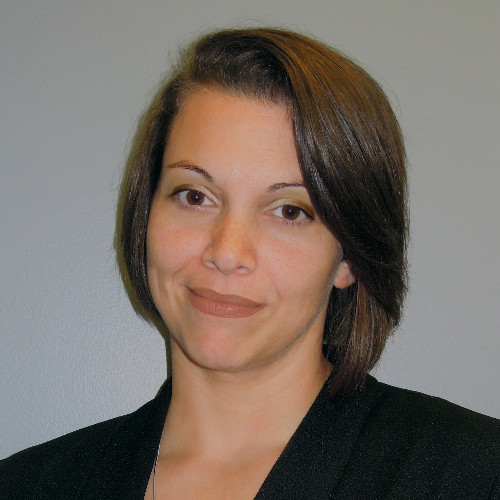
Title: Court Challenges – Avoiding Traps in Fingerprint Testimony
Deborah E. Smith
Fort Worth Police Department Crime Laboratory, United States
Abstract
The quality of testimony provided by a latent print analyst can go a long way into the acceptance of not only that particular analyst, but of the science itself. Not only it is important for an agency to have competent latent print examiners, but they must also be able to competently articulate the science behind the examination – the whys and hows of the science.
Biography
Deborah Smith graduated Summa Cum Laude with a Master of Science in Forensic Sciences and an emphasis in Forensic Science Administration from Oklahoma State University. Deborah serves as an International Association for Identification Certified Latent Print Examiner and Supervisor at the Fort Worth Police Crime Laboratory. She is a Certified Technical Assessor for the ANSI National Accreditation Board and a member of the Association of Forensic Quality Assurance Managers, and is an instructor for TriTech Forensics Training, where she teaches professional-level courses on latent print comparisons and essential quality practices in forensics.

Title: GENETIC FINGERPRINTING - ETHICAL CHALLENGES TO FORENSIC AND JUDICIAL PRACTICE
Keynote Talk
Porf. Beatrice Gabriela Ioan
Grigore T. Popa University of Medicine and Pharmacy, Iasi, Romania
Abstract
In 1984, the British geneticist Alec Jeffreys discovered genetic fingerprinting technology. This discovery marked the beginning of a new era in human identification and filiation research but also brought new challenges in forensic and judicial practice. In this paper, the authors analyze the advantages of using DNA fingerprinting in forensic identification such as: the presence of DNA in almost all cells of the body, its resistance to putrefaction, ease of storage of samples for long periods, low quantity of biological sample required, the favorable cost-effectiveness and the unprecedented accuracy of the method. On the other hand, the authors discuss the problematic issues associated to the DNA fingerprinting generated by its potential impact on the presumption of innocence or the right of the accused to a fair trial. The authors also discuss the issues generated by the creation of the DNA databases, such as the impact on confidentiality and privacy or the impact on the presumption of innocence. The authors conclude by emphasizing the responsibility of forensic experts in the prudent use and recognition of the limits of genetic fingerprinting, for the correct resolution of cases and the avoidance of injustice.
Key words: DNA, fingerprinting, forensic medicine, justice, ethics, challenges
Biography
Beatrice Gabriela Ioan is Professor of Legal Medicine and Bioethics at “Grigore T. Popa” University of Medicine and Pharmacy of Iasi, Romania, She also serves as forensic pathologist at the Institute of Legal Medicine of Iași. She graduated from the Faculty of Medicine in 1993, the Faculty of Psychology in 2002 and the Law Faculty in 2012. In 2004 she graduated from the Master Program in Bioethics at Case Western Reserve University, USA. She is a member of the Committee on Bioethics of the Council of Europe and its former Chair and a member of the International Bioethics Committee- UNESCO.

Title: Fifty shades of decay – why visual descriptors matter in accurate PMI estimations
Sanita Nezirovic
University of Derby United Kingdom
Abstract
Decomposition is a holistic process where the entire necrobiome needs to be studied1. Taphonomic research is limited by methodological approaches of small sample sizes and tendencies to focus one variable. This study provides an overview of taphonomic descriptors used in body scoring techniques2 as a tool for determining the PMI in pre-depositional freezing and removal/delay of insect access. A Generalised Additives Model was utilised to model the interaction of variables and providing comparative significance on decomposition. If the adjusted R2 value of 0.80+ was achieved, the taphonomic observations and applicability of the TBS system were considered as reasonable. Pre-frozen subjects had a similar rate of decomposition to the expected (control) with a mean TBS of 23.17 and 23.42, respectively. Insect-proof subjects demonstrated a delayed rate of decomposition with a mean TBS of 19.58. The GAM3 model showed that the TBS in insect proof subjects was significantly slower (p=0) from the expected sequence and the pattern of decomposition in pre-frozen subjects was not significantly different (p=0.584). The GAM model showed that the PBS in insect proof subjects was significantly slower in the head (p=0), trunk (p=0), and limbs (p=0) from the expected and the PBS in pre-frozen subjects was not significantly different in the head (p=0.566), trunk (p=0.897), and limbs (p=0.471) from the expected sequence. This implies the overall rate and pattern of decomposition are different in subjects with no/delayed insect access, and the use of visual descriptors to predict a PMI may be ineffective and not applicable to similar conditions.
Biography
Sanita Nezirovic working as Lecturer in Forensic Science, Employability Lead for Biomedical and Forensic Science at the University of Derby, and an Early Career Researcher at the School of Human Sciences in Forensic Anthropology and Forensic Taphonomy. Sanita Nezirovic primary specialization is forensic anthropology in mass grave search, recovery and identification, and as an osteoarchaeologist and Site Director for the Archaeological Practice Limited. Broadly, Sanita Nezirovic research concerns the rate and pattern of decomposition in sus scrofa cadavers and testing the feasibility and applicability of body scoring methods to predict a time since death by utilising statistical modelling. Sanita Nezirovic pursue my Forensic Taphonomy research via Master of Research projects, Early Career Researcher grants and Undergraduate Scholarship Schemes. Sanita Nezirovic supervise and direct multiple research projects and internships focused on topics related to Forensic Taphonomy.
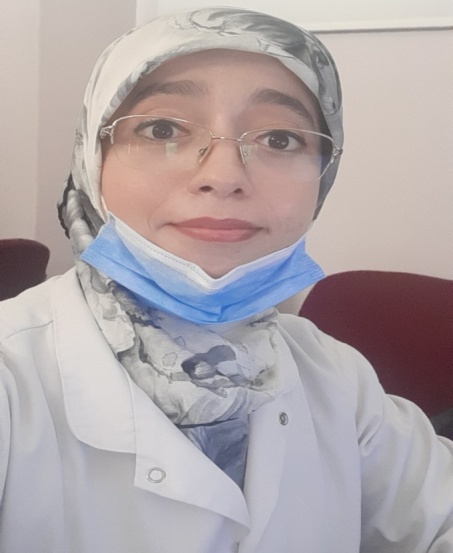
Title: Forensic Medicine in the Service of Justice: Assessment in case of Torture Allegations
Dr. Hind ABOUZAHI
University Hassan II, Morocco
Abstract
The term “torture” means any act by which severe pain or suffering, physical or mental, is intentionally inflicted on a person by a public Agent of judicial authority.
The general purpose of the forensic investigation is to establish the facts in cases of torture allegations. Medicolegal assessment can provide useful evidence in the legal context.
Forensic medical examiner involved in investigations of torture or ill-treatment must meet the highest ethical standards at all times and, in particular, must, before carrying out any examination, obtain informed consent from those concerned. This exam must be compliant to the established rules of medical practice. In particular, it should be done in private under the supervision of the medical expert and without the presence of security guards and other officials. The medical expert prepares a detailed written report without delay.
Here, we will highlight the medicolegal protocol assessment in case of torture allegations to help medical examiner dealing with such sensitive cases.
Biography
Dr. Hind ABOUZAHIR graduated from Public Medical University, she finished Forensic Medicine Residency training at the Medico-legal Institute, and became specialist doctor of Forensic Medicine. She was trained on the management of dead bodies and the identification of victims of mass disaster at the African School of Humanitarian Action, and at the Berlin Institute of Forensic Medicine and Forensic Sciences. She is a part of MLDI CoP Monthly Call group training programs, she Participating as keynote speaker at many congresses and conferences. She has published papers in reputed journals. She is Assistant Professor of Forensic Medicine at Casablanca Medical University.
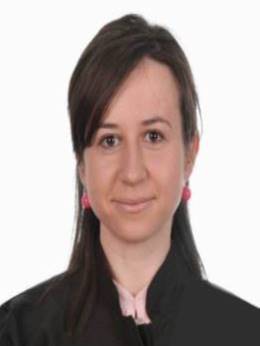
Title: Cards for the collection and archiving of biological samples: utility and limits in forensic medicine
Dr. Bianca Hanganu
Grigore T. Popa University of Medicine and Pharmacy, Iasi, Romania
Abstract
Filter paper cards are a simple and reliable way to collect biological samples, which allows their archiving and implicitly their analysis after long periods of time, with the same efficiency. Since its first use more than a century ago- for the determination of glucose in bloodstains, the fields of analysis have expanded greatly: systematic screening for metabolic disorders in newborns, diagnosis of infectious diseases, microbiology, serology, immunology or monitoring medication, using both blood samples and semen or saliva. In the forensic medicine field, these cards for biological samples have proven useful in the field of toxicology- for the analysis of medication, alcohol and prohibited substances, as well as in the field of serology- for DNA extraction and identification of the person. The authors present in this paper the steps in creating the cards for biological samples, emphasizing the advantages and limitations of using these cards in forensic medicine.
Key words: filter paper cards, forensic medicine, toxicology, serology
Biography
Bianca Hanganu is a forensic pathologist, specialist physician and assistant professor in Forensic medicine at Grigore T Popa University of Medicine and Pharmacy of Iasi. She attended many international scientific meetings were she presented her work and has published various papers in the field of forensic medicine, bioethics and medical communication, her main areas of interest.

Title: INTRODUCTION TO HUMANITARIAN FORENSICS
Dr. Swathi Kumareswar
JSS Dental College and Hospital, India
Abstract
Humanitarian Forensic action is a novel discipline in Forensics which involves the implementation of various fields of Forensic Science to Humanitarian operations. When people die during war, disater or migration, their bodies must be handled with respect and dignity. The dead must be found, recovered and identified. Humanitarian work has come to include the Dignified Management of the Dead. Humanitarian Forensics provides the necessary tools and expertise to manage this. Forensic Medicine , Forensic Anthropology, and Forensic Odontology play a major role in identification, which reunites the dead body to the identity of the person in life, so as to ensure that no one is buried as a John doe or a Jane Doe. An incomplete post-mortem assesment can lead to a delayed or even to a non - identification and would represent a violation to hiuman rights and International Humanitarian Law. In cases where people have been violently and radically dehumanised through disemberment either prior to or after death, Forensic Identification is also a practice of re- humanisation after death. Disasters, conflicts and other unfortunate events cannot be prepared, but response can always be prepared.
Biography
Dr. Swathi Kumareswar is serving as the Course Co-ordinator for the MSc. Forensic Odontology program in the Department of Forensic Odontology at JSS Dental College and Hospital, JSS Academy of Higher Education and Research, Mysore (India). Dr. Kumareswar is currently pursuing a Diploma in Human Rights Law from National Law School of India University, Bangalore, India and has completed her masters in Forensic Odontology from Gujarat Forensic Sciences University, now known as the National Forensic Sciences University, Gandinagar, Gujarat, India.
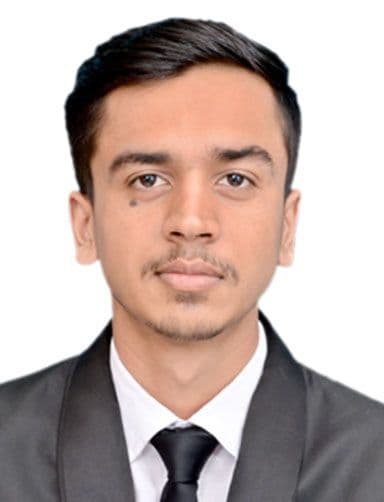
Title: Women in Digital Forensics – Indian Scenario: A Review
Mr. Bhargav Rathod
Legal Desire, India
Abstract
The 21st century is the era of digital crimes. These crimes are growing tremendously all around the world. Every digital or cyber-crime committed needs a thorough investigation, which is carried out in the area of Digital/Cyber Forensics. It takes a very long time for an examiner to examine and analyze each evidence used in cyber-crimes ranging from storage capacity of single kilobyte or megabyte to multiple terabytes. This Digital Forensics is a male dominated field in India, with majority of the positions filled with male candidates in contrast to the female counterparts. This paper deals with the data analysis of the Women currently working in the Digital Forensic/Computer Forensic of different Forensic Labs across India.
Biography
Bhargav Rathod is a young Digital Forensics Researcher who has completed Masters in Digital Forensics & Bachelors in Forensic Science. He is a Certified Information Security and Ethical Hacker & has helped various LEAs & lawyers to solve the cyber-crime related cases as a consultant. He is currently serving as the Executive Assistant for the Dept. of Forensic Science & Criminal Investigation, Legal Desire Media & Insights and Executive Editor for Forensic Reporter, India’s 1st Forensic Science Newsletter published by Dept. of Forensic Science & Criminal Investigation, Legal Desire Media & Insights. He has published various research & review papers in peer reviewed journals and is a regular article contributor for Legal Desire blog. He has also been a member of Organizing Committee for more than 15 National & International Conferences & Webinars.

Title: Palaeoanthropology of Homo erectus in Malaysia
Peter Cohen
Chaminade University, U.S.A.
Abstract
Current reserch involves searching for the presence of Homo erectus in Malaysia, specifically in the states of Perak, Pahang, Penang, Kedah and Perlis. Research efforts would entail geological, taphonomic and palaeontological assessment of appropriate sites that might yield evidence of hominid activity (skeletons, bones and tools). Previous research by the Centre for Archaeological Research Malaysia at the Universiti Sains Malaysia led by Associate Professor Dr. Mokhtar Saidin suggests the presence of early tools at Bukit Bunuh, Lenggong, Perak. This region, north of Ipoh, is rich in limestone karst exhibiting eroded karstic domes comprised of palaeozoic limestone facies. There are intermittent regions of lower palaeozoic volcanic sequences, primarily in northern Perak and central Pahang which offer the most promising regions for palaeoanthropological prospecting for indications of earlier Homo erectus habitation in Malaysia between 0.6-1.6 Mya. There is no apparent geological or ecological reason why Malaysia should lack fossil evidence of Homo erectus other than the fact that heretofore no evidence of its existence has yet been demonstrated in the region that constitutes contemporary Malaysia. The goal of these research projects are to discover and identify the first fossil hominin found in Malaysia.
Biography
Dr. Peter Cohen has undertaken research as varied as lichenology, forensic science, prebiotic chemistry, environmental science, biodiversity and conservation and palaeoanthropology. Dr. Cohen has spent 14 years in Southeast Asia studying the biodiversity of endemic flora and fauna; Dr. Cohen was a Fulbright Fellow at the Universiti Sains Malaysia (Science University of Malaysia) in Penang. Dr. Cohen received his Doctoral Degree Summa Cum Laude from the University of British Columbia in Vancouver, British Columbia, Canada. He received a French Academy of Sciences/CNRS Postdoctoral Fellowship to work with the late Professeur Guy Ourisson. Subsequently Peter Cohen became Assistant Professor of Biology at Adelphi University in New York and most recently Associate Professor of Forensic Science at Chaminade University in Honolulu, Hawaii.

Title: Effective partnership between academia and practice in Forensic Science. The importance of a collaborative approach
Joanne Morrissey
Anglia Ruskin University, United Kingdom
Abstract
The field of Forensic Science has experienced numerous challenges and difficulties worldwide in recent years with the lack of resources and funding having a significant impact. The 2019 Forensic Science Regulator’s report described Forensic Science provision in the United Kingdom as being at the point of becoming “untenable” (Forensic Science Regulator, 2019).
It is essential that forensic science provision is ethical, effective, efficient, and high quality and is resilient and responsive to change in order to maintain the confidence of the criminal justice system and the wider community.
The benefits of partnership between law enforcement agencies and academic institutions, and other industrial partners, are key to ensuring that these standards are met. Working together across the forensic landscape with collective investment in research and development; knowledge sharing and networking; recruitment, retention, and development a learning culture for the workforce; the development and maintenance of quality standards, with innovative and creative solutions to problems ensures that the field can stay current, relevant, and responsive to future challenges.
There are existing partnerships between universities and law enforcement agencies in the UK and these vary in size and purpose, but little information is shared about resourcing, funding, or effectiveness. The creation of models of partnership and sharing of knowledge across the discipline will enable the effective creation of partnerships that will maximise the outcomes and benefits to all involved.
Biography
Joanne Morrissey is the Director of Learning, Teaching and Assessment for the Faculty of Science and Engineering at Anglia Ruskin University. She has more than 22 years of experience as a Forensic Practitioner with the Metropolitan Police Service in London and the High Point Police Department in North Carolina, USA, and has been an academic for eight years with published papers in relation to subjects including fingermark development on ballistic evidence, fire risks from emollient use and drug analysis in hair samples. She is currently completing a Professional Doctorate in relation to partnership between academics and practitioners in Forensic Science.
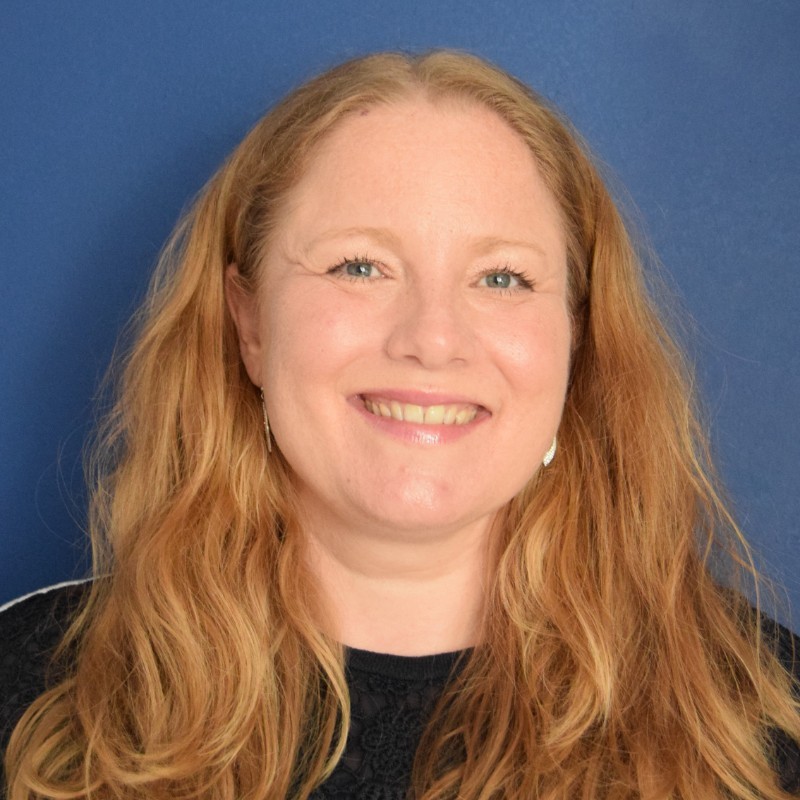
Title: Crime Scene Contamination issues tackled with innovative new App: Crime Scene Assistant
Angela Davies
Crime Scene Assist Ltd, United Kingdom
Abstract
Crime Scene Assistant is an innovative new App, launched in June 2020 by experienced Forensic Practitioners. The App aims to tackle the age-old problem of crime scene contamination, by increasing the forensic awareness of those that are often the first in attendance at a crime scene – The First Responder. There is only one opportunity to recover forensic evidence. Therefore, it is imperative that anyone interacting with crime scenes, has a basic knowledge and understanding of their environment and can make a substantive effort to maintain scene integrity. Despite this, First Responders and other professionals who encounter forensic evidence as part of their role, don’t always receive adequate Forensic Awareness Training. Crime Scene Assistant fills this knowledge gap, providing a step-by-step guide to approaching and preserving scenes and the evidence within, with tailored information for each First Responder. This presentation will demonstrate Crime Scene Assistant and highlight it’s benefits as a cost effective, sustainable and accessible tool that is currently being used both in the field and in education.
Biography
Angela holds a 1st Class Honours Degree in Crime Scene Science and an MSc in Mass Fatality Management and Victim Identification, from Teesside University, NE England, UK. She started her practitioner career in Forensics as a CSI for Northumbria Police, NE England, before going on to co-found CSI Training and Events Ltd in 2012 and later, its digital sister company, Crime Scene Assist Ltd in 2019. She has a wealth of experience in practical scene work, Disaster Response, Business and Education. She has developed and delivered training, lectures, workshops, and events, for a multitude of audiences, both nationally and internationally.

Title: MORPHINE POSITIVITY: ABUSE OR FOOD CONTAMINATION?
Agostini Vincenzo1 , Guarino Michela Maria1 , Sicilia Mattia2
1 University of Eastern Piedmont, Alessandria, Italy
2 GSC Chemical Advise&Analyses Lab, Olgiate Comasco, Italy
Abstract
After alcohol, opium is most likely the second substance that humans have been using for the longest time for its psychoactive effects: for example, morphine has the ability to decrease pain sensitivity even at small doses. The prolonged use of these substances with analgesic-narcotic action (of natural and synthetic origin), both for medical and pleasure use, cause addiction/dependence and are thus regulated by specific laws. In Italy, in order to maximize toxicological controls, employees of public administrations or private companies are subjected to constant toxicological analysis. When a worker tests positive for a certain illicit substance, he is momentarily relieved of the assignment, destined for therapeutic paths at drug addiction medical services and, in the extreme, fired. The present work wants to focus the attention on an increasingly growing and widespread problem, concerning the positivity of subjects to opiate substances, especially morphine, not as a result of illicit use/abuse but due to an involuntary intake via food, such as ingesting poppy seeds. For this purpose, basing on a real case, bread with poppy seeds was consumed by 16 healthy subjects of different sexes (seven women and nine men), having different physical characteristics and lifestyles and aged between 25-73 years old, whose urines (before and after intake) were tested with the classic chemical-analytical methods for searching opiates. Poppy seeds, manually shredded, were also subjected to toxicological analysis. The results obtained confirmed that, for most of the subjects, their positivity to morphine was not due to an abuse of the substance itself (or heroin), but from food contamination, and this situation could complicate their job placement or their social life.
Biography
Dr. Vincenzo Agostini, Professor of Forensic Biology at the University of Eastern Piedmont “A. Avogadro” (Italy). Graduated summa cum laude in Molecular Biology and Genetics at the University of Pavia and in Forensic Sciences at the University of Milan. Post graduated Master Degree in Forensic Genetics (summa cum laude) at the University of Roma Tor Vergata. Private Technical Adviser as Forensic Biologist for numerous national Public Prosecutors and Law Courts. Member of Ge.F.I. Group – Italian Forensic Genetists Group. Reviewer for Forensic Science International Journal.

Title: A Toxicological Analysis of Residue of Pesticide Sprayed on Lady’s Finger before & after washing with “Vishaghna Dravyas” (Antitoxic Fluids)
Mr. Mohammad Athar
IEHE College Bhopal, India
Abstract
In the present research effort is made to make a “difference”. Analysis is done by sophisticated chromatography techniques to find out whether, “Rock Salt solution” very common ingredient for Indian recipes or “vinegar water” as both substances are known for their antitoxin properties and therefore reduces pesticide residue to its maximum from ladies finger, after soaking it for 2-4 hrs rendering it safe for consumption. Qualitative analysis of malathion was done by HPLC method the retention time of malathion was found to be 2.825±0.3, and in given sample the retention time in water (2.072) and NS (2.559) was found similar to malathion (2.825) retention time, which confirm the presence of malathion in given water and NS sample
Biography
Mohammad Athar working as Assistant Professor: Department of Forensic Science, IEHE, College Bhopal & In charge Diploma in Forensic Science, IEHE, College Bhopal, India. Mohammad Athar Area of specialization is Separation Techniques, Forensic Toxicology, Sophisticated Instruments handling & operating such as FTIR, HPLC, HPTLC etc. working in various applications in the field of Forensic science. Mohammad Athar did his Master in Forensic Science June 2010 by Department Of Criminology& Forensic Science and Bachelor of Science in Biotechnology At Extol Institute of Management College, Barkatullah University Bhopal (M.P). Recently my research paper on “Undesirable effects of different chemical used in Tattoo Inks” acceptance as oral presentation in 2nd world summit on Toxicology & Applied Pharmacology 03-04 June2019 held in Berlin, Germany which theme on “connect, collaborate and perceive the cutting edges research work”
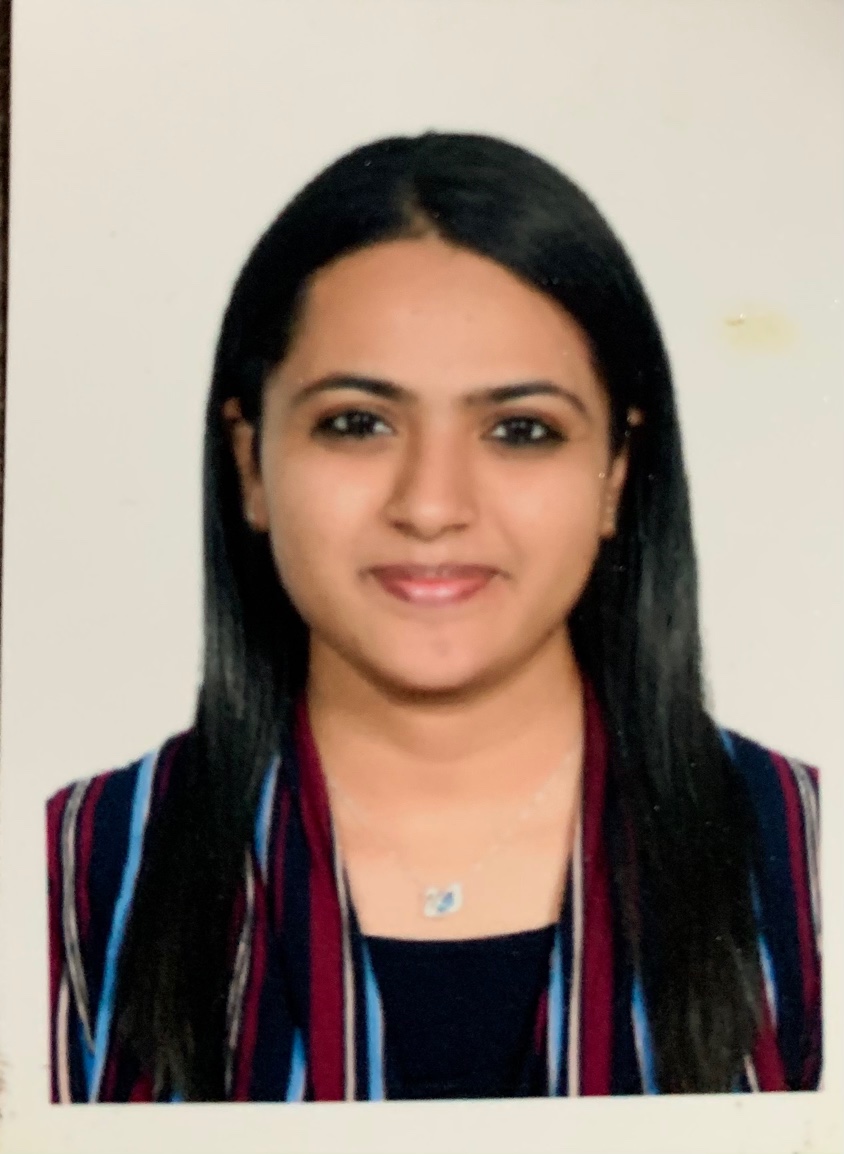
Title: Forensic Odontology – A Disaster Victim Identification Perspective
Dr. Nirali Shah
National forensic sciences university, India
Abstract
Disaster Victim Identification is an intensive and demanding task involving specialists from various disciplines. Identification of the deceased is not only a legal necessity but also human right and dignity that society has duty to preserve. The forensic odonatologist is one of the key persons who plays an important role in the DVI human identification process. The role of forensic odonatologist includes criminal investigation using bitemarks, antemortem and postmortem dental records and DNA analysis using saliva. This review will therefore provide an ‘eye of needle’ perspective about the position of forensic odonatologist in Disaster Victim Identification team and their significant role played during such event. It can be concluded that lessons learned from previous disaster incidents have helped to optimize working protocols and to develop new tools that can be applied in future DVI operations. The working procedures have been greatly improved by newly developed technologies.
Biography
Dr. Nirali Shah (Dr. Nirali Vishal Patel) completed her postgraduation In forensic odontology from National Forensic Sciences, Gandhinagar, Gujarat, India. She has completed her BDS from K.M.Shah Dental college, Vadodara, Gujarat. She has completed short term courses in fingerprinting, document analysis, handwriting and criminology. she has completed training on scientific management of victim of disasters. Attended and presented poster in 1st international conference Goa, India. She has been working as consultant forensic odonatologist and working on project under awareness of forensic odontology in police personnel in Gujarat, India.

Title: Sorting Of Colours Through Nature’s Eye: Melanism In All It’s Glory
Aswetha Iyer
GTN Arts college, India
Abstract
Animal colouration is a visually compelling aspect of biology in terms of phenotypic variation and diversification and has been a topic of fascination to ecologists, geneticists and conservationists for the longest time now. Different coat colours and patterns are considered to play an important role in communication, thermoregulation, UV protection, and concealment. More than 150 genes are considered to be candidate for producing a wide variety of coat colours and patterns in animals and these genes encode for certain enzymes that are involved in the synthesis of a natural skin pigment called melanin (a complex polymer) that is responsible for the hair, eye and skin colour. Melanocortin-1 Receptor (MC1R), Canine Beta defensin-103 (CBD-103) and Agouti Signaling Protein (ASIP) are few of the well-known genes that have been and continue to be extensively studied for understanding the genetics underlying the coat colour polymorphism in animals. Any kind of mutation in these genes will result in allelic variations and give rise to anomalous skin pigmentation, namely melanism or dark coat colour due to increased eumelanin production or albinism or light/white coat colour due to increased pheomelanin production; with Eumelanin and Pheomelanin being the variants of melanin. Melanism is rare but ubiquitous in the animal kingdom, especially in mammals. In Forensics, these variations can act as markers in identifying in case a protected wild animal is in trade. Also, such genetic approach can tell apart hybrids from domestic species, thus ensuring in being a handy forensic tool.
Biography
Aswetha Iyer is driven by passion for science with a strong motive to serve and better our world with scientific research and training. Academically inclined, she went on to do her graduation in Botany and post-graduation In Forensic Science with specialization in Forensic Biotechnology from the prestigious National Forensic Sciences University, Gandhinagar, Gujarat. As a part of her post-graduation, she did her dissertation/experimental research on Melanism in Canines at Centre for DNA Taxonomy, Zoological Survey of India, Kolkata for 6 months. Currently, Aswetha holds a full-time position of Assistant Professor in Department of Forensic Science, GTN Arts college, Dindigul, Tamil Nadu. She also served as Campus Ambassador, voice-over artist and creative team member for the largest E-Learning platform for Forensic Science in the country called Sarvayoni-India.

Title: "Dose makes poison": Forensic Toxicology and chemical poisoning
Martina Rossella Barberi
University of Catania, Italy
Abstract
This presentation targets to give a complete concept of what toxicology is, applications in the forensic field, how cases of poisoning from exposure to toxic substances occur and how they act in the body. Toxicology is the discipline that studies poisons: all toxic substances exert the harmful effect in our organism. The toxicity of a substance corresponds to the dose.
Biography
Martina Rossella Barberi is currently Studying course in Applied Pharmaceutical Sciences with a curriculum in Environmental and Food Toxicology at the Department of Pharmaceutical Sciences of the University of Catania. She intends to continue her career at the Master's Degree Course in Forensic and Sports Clinical Chemistry at the University of Turin. Her passion and future professional target are about forensic sciences. From many time, she has been participating training courses, webinars and seminars dedicated to forensic sciences, in particular relating to the crime scene: Locard's principle of interchange, is important to keep in mind in order to conduct investigations, establishes that: when two things come into contact, an exchange takes place between them. Investigation activities are "unrepeatable acts" carried out by highly specialized judicial police operators who, following appropriate protocols, identify the traces, take care of their conservation, taking care not to alter their status. In addition, she attended some courses about: digital forensics, investigative criminology, "first intervention on the place of the crime" and she partecipated at the 1st National Congress about the role of forensic sciences in Cold Cases. She curates a scientific popularization column in which, through videos, she exposes various topics about toxicology and activities on crime scene. In August 2020 she wrote an article for the online magazine "Scena Criminis", about child abuse and sexual abuse.

Title: Changing face of Handwriting Examination
Vinny Sharma
Galgotias University, India
Abstract
Handwriting examination has always been the most important field of forensic science. Its analysis methods have always been questioned by many. The Handwriting experts all over the world have worked hard to make the examination and analysis procedures as scientific as they can. Addition of rules of examination, individuality of handwriting, identification of handwriting has given a strong scientific support to the handwriting science. But the was always raised due to its subjective nature of concluding the opinion. With the increased availability of the technological advancements the subjective nature of examination has changed rapidly. The advanced technological aids includes usage of Video-Spectral Comparator (VSC), Digimizer, which has redefined not only the handwriting examination but other analysis too which are undertaken by the questioned documents experts. Along with this the tools of computational analysis such as MATLAB and those of artificial intelligence such as NLP, CNN, has given rise to another domain of handwriting analysis known as OCR – Optical Character Recognition. All these advancements have not only strengthen the analysis reports of handwriting examination but have also helped in reduction of time taken for the purposes of analysis.
Biography
Mrs. Vinny Sharma, Assistant Professor, Forensic Science, Galgotias University, India. She has expertise in Finger-Prints, Handwriting Examination, Criminal Profiling, Forensic Photography, Digitization of evidences, OCR and AI. She is a member of various organizations: Member, EPg-Pathshala Project, MHRD, Govt. of India; Editorial Board, International Journal of Forensic Science, India. She has been awarded with Honorary Membership of Criminological Research And Development Organization. She is also an appointed Innovation Ambassador, Galgotias University, for IIC an initiative of Ministry of Education, GoI. She has completed her training on Stakeholder Engagement for the Implantation of the UNTOC organized by United Nations Office on Drug and Crime. She has published more than 60 research papers in National and International journals/conferences. She has also been invited as speaker (invited/keynote) in various national and international conferences and webinars. She has 1 patent credited to her.
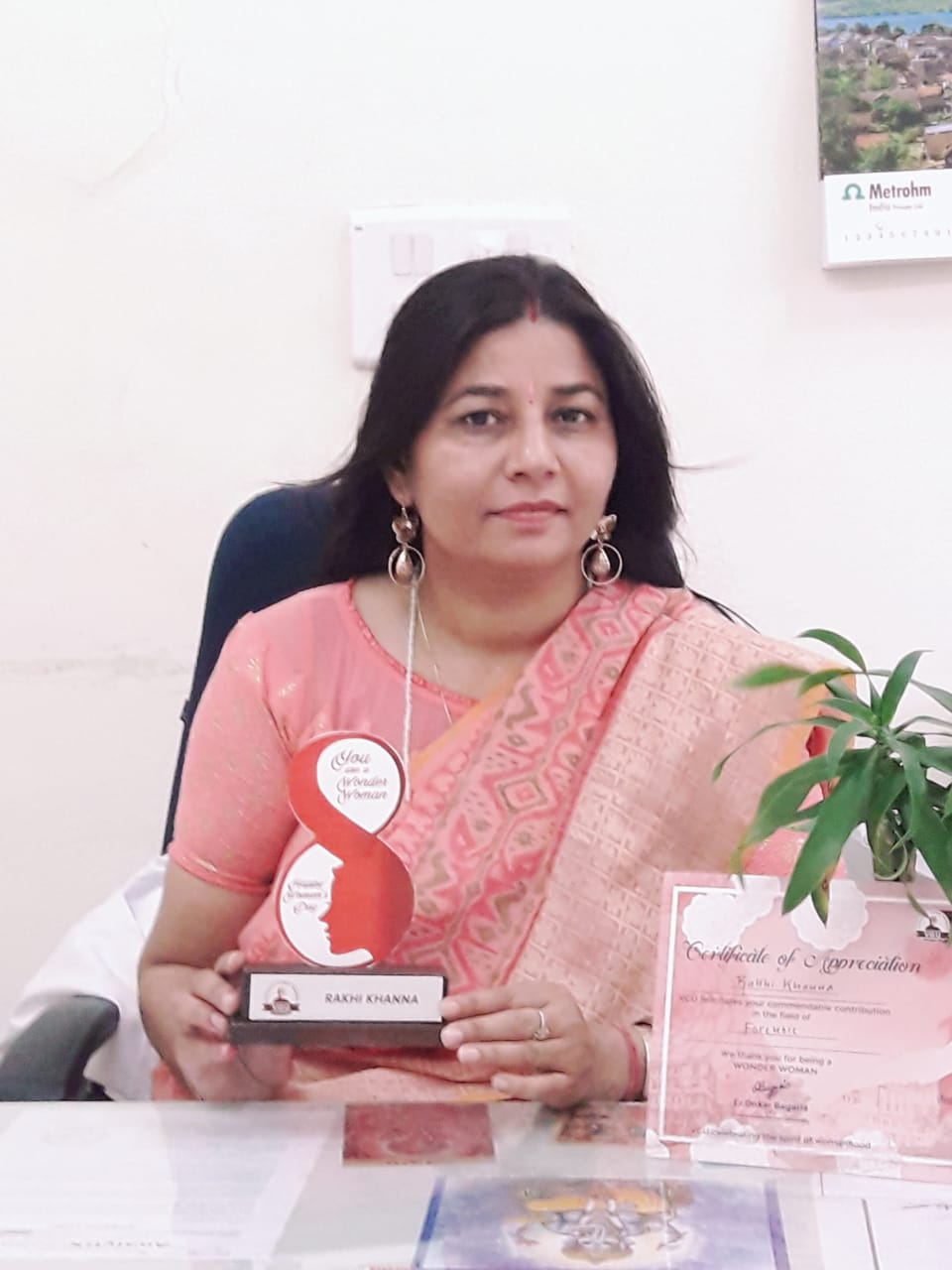
Title: Crime Scenes Requirements Present and Future in Indian Perspective: Challenges, Types, Kits and Solutions
Dr. Rakhi Khanna
State Forensic Science Laboratory, Jaipur, India
Abstract
In India crime scenes and their investigation needs advancement in availability of crime scene analysis kits and requirements. When we search for types of crime scenes we need to start with preservation of crime scenes and relevant clues. Before evidence collection a chronological order of viewing the crime scene needs 3D recording of artefact’s and evidences from scene is very important. Hence specific techniques of photography and videography are required to know. There are utmost chances of misleading facts by manual mistakes occurs due improper use of techniques and kits. In absence of scientific knowledge of use of various kits it is quite challenging to help investigation towards justice. The cases varied from firing, blood shed, strangulation, hanging, drowning, Rape and murder, burning, blast cases, explosives, electrocution, accident, drugs, poison, venom etc from chemical warfare to biological warfare extending towards digital cyber warfare. Hence it needs updating accordingly.
Biography
Dr. Rakhi Khanna is presently the Deputy Director Training at State Forensic Science Laboratory, Jaipur, Rajasthan, India. As Head of Toxicology section, Analyzed more than 10 thousand cases. Manage Analysis and Reporting of Poisoning cases, Produce Reports in time, Give evidence in court, Adoption of new innovative techniques of analysis according to specific cases. Performed Research work in many cases. President of Internal Complaint committee of Prevention, Prohibition and Redressal Act against sexual harassment of women at workplace, 2013. Has wide experience of analytical and administrative work as DDO, Building construction of new building, Development of new Laboratory and Toxicology Division at Ajmer, Attend conferences, sending papers in conferences, taking invited lectures. Working experience of 22 years as Forensic Scientist cum Toxicologist from 1998 and have experience of analyses of large number of cases. approx. 20,000 cases and 60000 exhibits are reported.
+91 9491 456 452
Door No.200, Immidhihalli Main Road, Whitefield-560066, Bangalore, India
About Us
Global Scientific Guild organizes conferences and webinars to promote quality research and real world impact in an atmosphere of true international co-operation between scientists, doctors, professors, practitioners, engineers and industry by bringing together the world class renowned personalities to discuss the latest developments and innovations at one common platform.